“Kimat Yachay is not just a newspaper; it is a testament to the power of collective action, reciprocity, solidarity , and an unwavering belief in the collective potential of Indigenous Peoples.”
Myrna CunninghamPag.2

“Kimat Yachay is not just a newspaper; it is a testament to the power of collective action, reciprocity, solidarity , and an unwavering belief in the collective potential of Indigenous Peoples.”
Myrna CunninghamPag.2
Preserving Cultural Heritage and Protecting

The Arctic: An Interview with Gunn-Britt Retter
Pag.3
Philanthropy: Shaping a Transformative Future in 2023 and Beyond
Pag.4
Welcome to the inaugural issue of Kimat Yachay, the newspaper of The Pawanka Fund. We are thrilled to embark on this journey of storytelling, knowledge sharing, and advocacy for the rights and well-being of Indigenous Peoples around the world.
Learn about our local voices:
Strengthening the Customary Institution of Iban Sebaruk Indigenous Peoples for Realizing Effective and Credible Customary Law System.
Pag.6
“Kimat Yachay” combines words from two different indigenous languages, Ibaloi from the Philippines and Quechua from the Andes in South America.”Kimat” is an Ibaloi word, spoken by the Ibaloi people in the Cordillera region of the Philippines. In Ibaloi, “Kimat” means “lightning.” In many cultures, lightning is seen as a powerful symbol of energy, illumination, and rapid transformation. “Yachay” is a Quechua word that means “knowledge” or “wisdom.” In Andean cosmology, knowledge is not just information but also a form of practical and spiritual wisdom that is lived and shared within the community. Therefore, “Kimat Yachay” could be interpreted as “Lightning of Knowledge” or “Illumination of Wisdom.” As the name of a newspaper focused on indigenous issues, this title suggests that the publication aims to convey knowledge with the speed and impact of lightning, enlightening readers with the wisdom of indigenous cultures.
The creation of Kimat Yachay reflects our unwavering commitment to broadening our collective knowledge by hearing the voices of Indigenous Peoples, whose stories often go marginalized and unheard. We firmly believe that all Peoples deserve to be seen, heard and celebrated. By dedicating this platform to their stories, struggles, challenges, and triumphs, we aim to platform the narratives of Indigenous Peoples on a global scale.
One of our primary goals is to shed light on the remarkable processes being carried out within the territories supported by The Pawanka Fund. The initiatives represent the profound connection between

Indigenous Peoples and their lands and territories as well as their unwavering commitment to sustainable development. From revitalizing traditional farming practices to protecting natural resources, these initiatives exemplify the resilience and ingenuity of Indigenous Peoples.

Beyond showcasing these initiatives, Kimat Yachay serves as a gateway to sharing knowledge. Indigenous cultures possess a wealth of wisdom, accumulated over centuries of harmonious coexistence with nature. Through this newspaper, we strive to create a space where this knowledge can be exchanged, preserved, and disseminated. By doing so, we promote crosscultural understanding, challenge misconceptions, and foster appreciation for Indigenous Peoples ways of life.
It is crucial that we, as a global society, recognize the significance of Indigenous Peoples’ voices and perspectives. Their profound understanding of ecosystems, spirituality, and community dynamics can offer invaluable insights and solutions to the pressing challenges we face today, from environmental degradation to social inequalities. By amplifying these voices, we not only honor their cultural heritage but also work towards a more inclusive and sustainable future for all.
As we embark on this journey together, we invite you to immerse yourself in the stories, articles, and features in this inaugural issue of Kimat Yachay. Let us celebrate the richness of Indigenous Peoples’ cultures, champion their rights, and stand in solidarity with their aspirations for self-determination and sustainable development.


Together, let us create a world where the vibrant tapestry of Indigenous Peoples’ voices resonates loudly, inspiring change, and shaping a more equitable and harmonious future for generations to come.
In unity and solidarity, The Pawanka Fund.


I am thrilled to extend a warm welcome to you as we embark on an exciting journey with this inaugural edition of Kimat Yachay. As the Chair of Pawanka Fund Guiding Committee it brings me immense joy to introduce this platform that will highlight our philanthropic endeavors and the remarkable impact we are making in the lives of indigenous communities worldwide.
Kimat Yachay is not just a newspaper; it is a testament to the power of collective action, reciprocity, solidarity , and an unwavering belief in the collective potential of Indigenous Peoples. Through the pages of this publication, we invite you to delve into the inspiring stories, groundbreaking projects, and transformative initiatives that embody the spirit of The Pawanka Fund.
At The Pawanka Fund, our core mission is to empower Indigenous Peoples and create a world where their voices, cultures, and aspirations are acknowledged and celebrated. Through strategic partnerships, grants, and advocacy, we have been able to provide vital support to numerous initiatives that address the pressing challenges faced by Indigenous Peoples.


In the coming issues of Kimat Yachay, we will delve into the diverse range of initiatives we support, spanning areas such as education, health, cultural preservation, environmental sustainability, and economic empowerment. We will share stories of resilience, innovation, and the profound impact these initiatives have had on the lives of indigenous communities and peoples.
Thank
Kimat Yachay celebrates the spirit of intercultural philanthropy and empowers Indigenous communities worldwide.
Our commitment to transparency and accountability drives us to share the successes, challenges, and lessons learned from our intercultural philanthropic endeavors. Through these stories, we ho e to inspire others to join us on this journey of positive change and foster a global community that embraces diversity, justice, equity, cultural heritage, and sustainable development.
As you explore the pages of Kimat Yachay, I encourage you to engage with the stories, connect with the communities and organizations involved, and become a part of our ever-growing network of changemakers. Your support, whether through spreading awareness, contributing your skills, or advocating for Indigenous Peoples’ rights, plays a crucial role in amplifying the impact of our collective efforts.
Warm regards, Myrna
Cunningham Chairperson, Pawanka FundI extend my heartfelt gratitude to the dedicated team behind Kimat Yachay and to each and every one of you, our readers and supporters. Together, let us celebrate the spirit of intercultural philanthropy, stand in solidarity with Indigenous Peoples, and work towards a more equitable and sustainable world.
We had the privilege to sit down with Gunn-Britt Retter, a passionate advocate for Indigenous rights and the head of The Arctic and Environmental Unit at the Sámi Council. With over two decades of experience in addressing Arctic Environmental issues, Gunn-Britt has been at the forefront of protecting the interests of indigenous communities in the face of climate change, biodiversity loss, and the sustainable management of natural resources. In this exclusive interview, Gunn-Britt shares her insights into the challenges and opportunities that lie ahead for Indigenous Peoples, highlighting the significance of grassroots empowerment and the preservation of cultural heritage.
Q: What is your current role?
GBR: Currently, I hold the position of Head of The Arctic and Environmental Unit at the Sámi Council. In this role, I am actively involved in advocating for the rights and interests of Indigenous peoples, particularly in relation to climate change, biodiversity, language preservation, pollution, and the sustainable management of natural resources.

Q: How long have you been working with Arctic Environmental issues?
GBR: I have been working with Arctic Environmental issues since 2001. Over the years, I have dedicated my efforts to addressing the unique challenges faced by Indigenous communities in The Arctic region.

Q: Why did you accept the invitation to join the Pawanka Fund’s Guiding Committee?
GBR: I gladly accepted the invitation to become a member of The Pawanka Guiding Committee because of the important work it does in empowering indigenous communities globally. As the head of The Arctic and environmental unit, I constantly engage with states and negotiate Indigenous People’s positions in Arctic policies. It can be disheartening to always find ourselves on the losing side. Joining the Pawanka Guiding Committee presented an incredible opportunity to meet like-minded individuals from around the world and draw inspiration from their experiences. I was particularly excited about the chance to discuss grassroots needs and concerns, which are crucial for empowering people to address their own challenges.
Q: What is the focus of your work in The Arctic region?
GBR: In my work in The Arctic region, I have been primarily focused on two key areas. Firstly, I have been identifying and supporting local indigenous groups that are opposing extractive industries. The Arctic is witnessing an influx of extractive industry projects under the guise of green transition, such as wind power plants and mining for rare minerals needed for batteries. It is crucial to stand against this form of continuous colonization, which is simply disguised in a different color. Empowering these Indigenous groups and assisting them in their fight against such projects is of utmost importance.
Secondly, I have been actively involved in promoting language initiatives and supporting youth and children programs in Greenland, the Aleutian Islands, and Alaska. Language holds an immense amount of knowledge about the environment, nature, and climate change. By encouraging people to embrace their language and the knowledge it encompasses, we can enhance our understanding of these critical issues and foster a deeper connection to our surroundings.
Q: Why do you emphasize the importance of language?
GBR: Language is an invaluable repository of traditional knowledge and wisdom passed down through generations. It provides us with a profound understanding of the environment, nature, and the impacts of climate change. Preserving and revitalizing indigenous languages is essential for maintaining cultural heritage and strengthening the resilience of Indigenous communities. By embracing and valuing our languages, we can ensure the continuity of invaluable knowledge and empower future generations to face the challenges of the everchanging world.
Q: Besides The Arctic region, which other areas do you focus on in your work?
GBR: In addition to my work in The Arctic region, I have also dedicated my efforts to identifying and supporting projects in Greenland, the Aleutian Islands, and Alaska. These areas have seen remarkable initiatives aimed at preserving indigenous languages and empowering youth and children. By extending our focus beyond The Arctic, we can learn from and contribute to the diverse indigenous communities worldwide, fostering collaboration and sharing of best practices.
Q: What challenges do you face in supporting Indigenous Peoples on the Russian side of The Arctic?
GBR: Unfortunately, one of the challenges we encounter is the inability to provide direct support to Indigenous Peoples on the Russian side of The Arctic. While Russia is a significant part of The Arctic region, the current circumstances limit our ability to extend our support fully. However, despite this obstacle, we remain committed to advocating for the rights and well-being of all Indigenous peoples.
As we conclude our conversation with Gunn-Britt Retter, we are reminded of the unwavering dedication and determination she brings to her work. Her efforts in The Arctic region and beyond have not only empowered Indigenous communities but have also shed light on the critical role of language, knowledge, and collaboration in addressing the pressing issues of our time. Gunn-Britt’s commitment to creating a sustainable and inclusive future for all serves as an inspiration to us all. We extend our gratitude to Gunn-Britt for sharing her invaluable perspectives and for her unwavering commitment to advocating for Indigenous rights and environmental stewardship.
In this column, we will delve into the emerging trends, innovative approaches, and transformative impact that philanthropy holds for the year 2023.As we step into a new era, philanthropy continues to evolve, driven by a deep sense of responsibility and a desire to create positive change.
In 2023, we are witnessing a shift towards more strategic and impactful giving, as donors seek to maximize the effect of their resources and create lasting outcomes. Here are some key trends shaping philanthropy this year:
Impact-driven Philanthropy:
Donors are increasingly focusing on measurable impact and outcomes. They are seeking innovative solutions and collaborative approaches that address the root causes of social and environmental challenges. Impact investing, venture philanthropy, and collective giving are gaining momentum as avenues to drive transformative change.
Equity and Inclusion: Philanthropy is embracing a more inclusive and equitable approach, recognizing the importance of addressing systemic inequalities. Donors are actively supporting marginalized communities, amplifying underrepresented voices, and advocating for social justice. They are striving to create a more equitable society where everyone has equal opportunities to thrive.
Partnerships and Collaboration:
Collaboration is becoming central to philanthropic efforts. Donors are forging strategic partnerships with like-minded organizations, governments, and communities to pool resources, share expertise, and leverage collective impact. Collaborative philanthropy is breaking down silos and driving innovative solutions that address complex challenges.
The SDGs continue to guide philanthropic priorities, providing a framework for action and impact. Donors are aligning their giving with the SDGs, recognizing the interconnectedness of social, economic, and environmental issues.

By focusing on specific goals, philanthropy is driving progress towards a more sustainable and inclusive future.
Technology is revolutionizing philanthropy, offering new tools and approaches to enhance impact. From crowdfunding platforms to blockchain-based transparency, technology is enabling greater accessibility, efficiency, and transparency in giving. Digital platforms are empowering individuals to contribute to causes they care about, democratizing philanthropy.
In this dynamic philanthropic landscape, The Pawanka Fund is committed to staying at the forefront of transformative giving. We recognize the significance of these trends and are constantly evolving our strategies to maximize our impact. Through strategic partnerships, innovative programs, and a deep understanding of the needs of Indigenous Peoples, we strive to create sustainable, long-term solutions that foster empowerment and positive change.

We embrace the Guiding Principles that shape our philanthropic approach and drive our commitment to positive change. A holistic approach maintains, sustains, and builds inter-relationships between peoples, land, territories, and nature. Complementarity strengthens the bonds between individuals and peoples from different regions, recognizing the unique contributions each brings to collective well-being. Reciprocity fosters harmony between humans and other beings in the cosmos.
We value intercultural and gender relations, understanding that global exchange among different cultures and peoples increases the capacity of all towards social change. Furthermore, we firmly support the self-determination of Indigenous Peoples, respecting their right to freely determine their political status and pursue social, cultural, political, and economic development.
Lastly, we honor the principle of free, prior, and informed consent, acknowledging the right of Indigenous Peoples to fully participate in decisions that affect their lives.
With these guiding principles as our compass, we strive to create a philanthropic landscape that respects, uplifts, and empowers Indigenous Peoples and their communities. Together, we can build a more inclusive, equitable, and sustainable world.
As we navigate the philanthropic landscape of 2023, let us embrace the power of giving and the potential it holds to shape a transformative future. Together, we can build a more equitable, inclusive, and sustainable world where every individual and community can thrive.
Stay tuned for more insights, inspiring stories, and thought-provoking discussions in the Philanthropy Corner. Let us embark on this journey together, driven by our shared commitment to philanthropy and the belief in the power of collective action.
Shaping a Transformative Future: Pag.5 Kimat Yachay NUMBER 1 - JULY 2023 www.pawankafund.org
“ “
In Sanggau District, West Kalimantan Province in Indonesia, more than 6,000 Indigenous Iban Sebaruk people were involved in Institut Dayakologi’s project to strengthen their customary institution for an effective and credible customary law system.

They began with an assessment of the Iban Sebaruk Customary Administration as the highest legal authority of the Indigenous territories under its jurisdiction. The series of workshops stretched over a one-year period from June 2017 to May 2018 and was attended by customary administrators, Indigenous leaders, women, and youth from fourteen villages (kampongs). The project’s objectives were explained and disseminated to all participants for them to appreciate the need to strengthen customary institutions and customary laws.
Workshop topics varied: strategic planning and organizational development; the strength and credibility of the Iban Sebaruk Customary Administration; its functions and operations, criteria, selection and appointment system of Ketemenggungan in accordance with current conditions; strengthening customary institutions and spatial planning of Iban Sebaruk Indigenous Territory; election and authorization of Temenggung and customary officials through deliberation and democratic processes; leadership, protection of Indigenous territory, critical law, human rights and Indigenous Peoples’ rights, and gender equality; and the existence of traditional institutions and Dayak culture. Subsequently, workshop results were disseminated in all 14 villages in the Iban Sebaruk region.
After the workshops, the group lobbied for policy formulation for the recognition of Indigenous territory and customary institution of Iban Sebaruk as well as for the local government to authorize Ketemenggungan to implement customary law and protect Indigenous territories. The Indigenous territory of Iban Sebaruk Administrative District was registered for recognition as customary forest and village by the states after required documents, including maps, demographic data from the Iban Sebaruk customary administration, and a description of the customary institution structure were submitted to the local district government for verification.
Participatory mapping of Indigenous territories took place, and all 14 village maps were ratified. During the year, the process of restitution and traditional rituals in all territories of Ketemenggungan were documented, and a
book on customs and traditional institutions of the Iban Sebaruk Indigenous peoples was written and published.
Significantly, there are now women representatives in the Iban Sebaruk administrative institution. Yuliana Ita said that,
and industrialization are pervasive to the extent that some consciously and unconsciously abandon their traditional knowledge. Despite awareness of customary law and Indigenous knowledge, there is a lack of regeneration due to the youth‘s flagging interest and enthusiasm for knowing their customs, culture, and local knowledge. Also, some Indigenous leaders are government-appointed and influenced, thus lack authority and independence and often ignore the community’s voice.
The villages in Iban Sebaruk districts are distant and the roads are badly maintained, limiting access to far-flung areas. It was also difficult to gather the community for meetings, because most of them work as laborers in oil palm plantations or are farmers who spend significant time in their fields during the farming season.
However, their participation and the role of youth in protecting the Indigenous territory and managing natural resources based on local knowledge are still not optimized.
Customary law has become the basis for solving problems faced by Indigenous peoples in the territory. For example, the new customary law prohibiting land sales to outsiders is the result of an agreement among customary leaders.
Challenges continue to hound the project, however, including a land conflict between the Iban Sebaruk people and oil palm plantation companies. The latter’s expanding operations in Indigenous territory has led to loss of Indigenous peoples’ land. The presence of large-scale companies has affected the mindset of people, including customary leaders. Modernization
The process for recognition of Indigenous peoples’ territory and customary institutions is not over yet. The foremost challenge remains advocacy at the grassroots level, which requires capacity-building to empower and educate people on customary practices and enforcement of customary law. The Iban Sebaruk community has become braver and more confident in enforcing customary laws in cases of violations. The project has taught the communities that advocacy and lobbying with the government is vital for the legal and formal recognition of Indigenous territory and forest to prevent land grabbing by outsiders, such as oil palm and mining companies. Customary administrative leader Yordanus Hatta shared that “As a trusted leader, I have to have a lot of courage to practice customary law. We gained knowledge about our rights and we also know that our customary law is being respected by the states. These make us more confident in enforcing the Iban Sebaruk customary law, as we punished an oil palm company that entered our Indigenous territory without our permission.”
Customary law favors traditional healer Nyunta who said, “I feel like I am being accepted again and my knowledge is being appreciated by the community. As we know, traditional healing is often seen as black magic, especially by various religions coming to our village. Now, I feel more confident in practicing my Indigenous knowledge to heal people.”
(The project “Strengthening the Customary Institution of Iban Sebaruk Indigenous Peoples for Realizing Effective and Credible Customary Law System” was implemented by the Institut Dayakologi from June 2017 to May 2018 with the support of The Pawanka Fund.)
“ “
The project was helpful especially for us women in this kampong because the trainings on gender equality made us realize our rights and position in society.
Latin America is the most urbanized region in the world. In the last decade, already 80% of its population lived in urban areas. By 2021, 35% of the population lived in cities of 1 million or more inhabitants. The high rate of migration to cities also makes it the most unequal region in the world.
Our story refers to two Indigenous border communities in Chile and Argentina, which share traditional knowledge: one Aymara and the other Quechua. The Aymara community lives in the north of Chile, in Arica, in the Tarapacá region, where the Parinacota National Park is located. The Quechua community is located in Jujuy, in the Humahuaca region.

In the last three years, the pandemic, the economic crisis and inflation have generated a lot of shortages in urban migrant communities, which has motivated many to return to their communities of origin to alleviate their needs.
The intergenerational transmission of traditional knowledge project, aimed at addressing climate change, under the leadership of the Center for Indigenous Communication and Research “Chaski Nayrampi”, with the
the participation of young people, women and leaders of the Omaguaca, Kolla, Aymara, and Lickanantay Indigenous peoples of northern Chile and Argentina. Families that returned to their communities have promoted the recovery of traditional knowledge in agriculture and management of medicinal plants to face the effects of climate change. Grandparents, who still preserve traditional knowledge, still live in rural areas and are the natural choice to lead intergenerational teaching processes.
Hence, their leadership is manifest in their actions as healers, as producers and as knowers of community history. The elders know how and where traditional foods and medicinal plants are grown, harvested and preserved. They are the teachers who, with the help of the younger ones, are willing to share their knowledge so that it does not disappear.
At 3,500 m high altitude and more than 4,000 meters above sea level, in the Andes there are agricultural areas where Indigenous peoples produce traditional food. One of their main products is the potato, from which chuño is made during the winter, based on a dehydration process that allows it to be stored for decades whilst preserving its nutritional properties.
A producer explains: “It can last for years, as long as it is kept in dry places. For example, I have some chuños stored that are more than 15 years old, they are still intact. They have to be kept in dry places. […] it can last for years and it will never lose its quality, […] the stored fruit does not lose its nutritional flavor and vitamins. We will always be saving, with this chuño we will always live well, you see, scientifically it’s already authorized for human consumption”.
The traditional process requires that the potato be exposed to the intense winter frosts in the Altiplano to freeze solid at night, and in the daytime, the families collectively step on the potatoes to extract the internal water from the tubers. This process is repeated until the chuño is obtained. The elders teach the youngsters how to process the Chuño, separating it by quality and size, setting aside portions for family consumption and portions for sale in the markets.
The community is building on this process that was developed by their ancestors. Today, through biotechnology freezedrying, a process with similar results, is being perfected for use. In other words, frozen products are dried; the food industry is initiating a large-scale process to freeze not only potatoes, but also vegetables, fruits and meats without a cold chain. Therefore the recovery of chuño processing technology is fundamental
Contact: pawanka@pawankafund.org
because it contributes to Well Being of the community, enhancing food security and health while reducing dependence on large-scale commercial industrial-agricultural processes.
This cultural practice is a reflection of their autonomy to decide how to best organize themselves at the community level, allowing the establishment of internal agreements. In these Indigenous communities, leadership falls on both male and female elders and healers
Board of Directors: Dr. Myrna Cunningham
Carla Bush
Oscar Aguilar
mtchm from - - Flickr
depending on their respective expertise of the ancestral practice. An example of these is the importance of recovering seeds, medicinal plants and waste management, because they see the importance of achieving harmony in the communities’ environment.
If you want to know the references of this article visit: www.pawankafund.org/blog-news/ if-the-grandparents-the-tatas-leave-we-will-bewithout-knowledge/
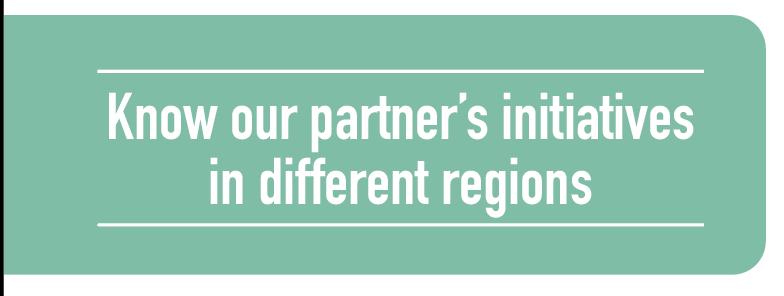
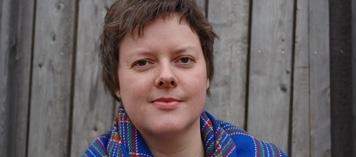
The Guiding Committee (GC) is composed of ten recognized indigenous leaders from seven regions of the world, with decades of experience on global indigenous movements. They lead and make collective decisions on various aspects of operations, including the strategic plan, annual budget, governance mechanisms, grantmaking priorities and issues, and resource mobilization strategies. This space reflects on how to reach remote/ underserved communities and how best to use resources to organize and leverage support to communities and coordinate work with donor partners. All CG members
participate on a voluntary basis and meet in person once a year and at least twice virtually. CG members act as mentors and help build the capacity of local partner groups to mobilize themselves (and others), create new alliances, gain visibility, access diverse decision making platforms and funding opportunities, articulate and align local priorities with global indigenous movement Governance, Strategies and Leadership (staff) 18 processes, identify strategies for institutional strengthening, and promote cultural and knowledge exchanges.
Myrna Cunningham Kain Centro para la Autonomía y Desarollo de los Pueblos Indígenas (CADPI)

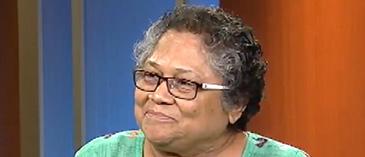
Pueblo Indígena Miskito, Nicaragua
Teresa Zapeta Foro Internacional de Mujeres Indígenas(FIMI)

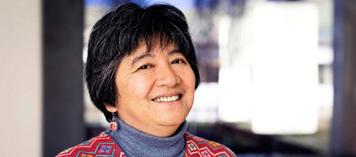


Maya K’iche - Guatemala
Rukka Sombolinggi

The Aliansi Masyarakat Adat
The Aloha‘Āina Fellowship is a long-term mentorship program based on the Island of Molokai Wherein young adults are trained in Indigenous natural resource management, cultural resource management, and Indigenous food systems.

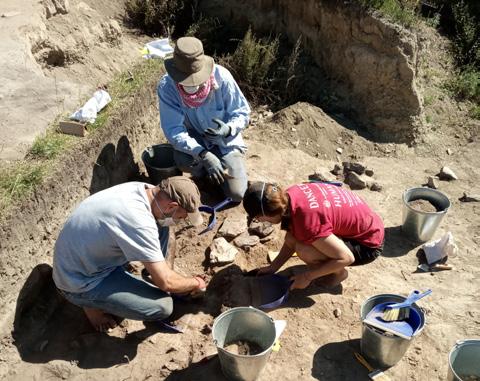 By: ‘Āina Momona
By: ‘Āina Momona
YAKANAL: Mother Moon
We propose to continue Mother Moon, an Indigenous-led effort to research, protect, and share traditional knowledge of the Moon to animate ancestral wisdom and practice related to women’s/nonbinary and community wellbeing.
By: YAKANAL Indigenous Youth Cultural Exchange Program
Arctic Indigenous Youth Leaders’ Summit
Saami Council is hosting the 6th Arctic Leaders’ Summit (ALS6) for Arctic Indigenous Leaders in November 2019. Arctic Indigenous Peoples Leaders will meet and discuss common concerns such as environmental and socioeconomic impacts of the rapid environmental and climate changes in The Arctic.

By: Arctic Indigenous Youth Leaders’ Summit
CENTRAL AND EASTERN EUROPE, RUSSIAN FEDERATION, CENTRAL ASIA AND TRANSCAUCASIA
The goal of “Education Through Action’’ project was to activate the collective memory of the Indigenous population of the Sacred Karakol Valley by organizing a campaign to education through action. The project’s main concept is that the Knowledge of Indigenous peoples is preserved in Sacredlands, while human activity activates the flow of that knowledge, reanimating collective memory.
 By: Protectors of the Karakol Valley initiative
By: Protectors of the Karakol Valley initiative

Promotion and extension of traditional plant species for food security and income generation to sustain Indigenous communities in Thailand
The ultimate goal is to promote and extend selected traditional plant species for enhancing food security and income for Indigenous families and communities. This builds on the outcome from the previous project by selecting a few potential plants which have high nutritional value and will serve as pilots for household income generation activities and community fund-implemented in three pilot areas.
By: Network of Indigenous Peoples in Thailand (NIPT)

Pawanka has a system for making strategic decisions, evaluating project performance and ensuring accountability and transparency.